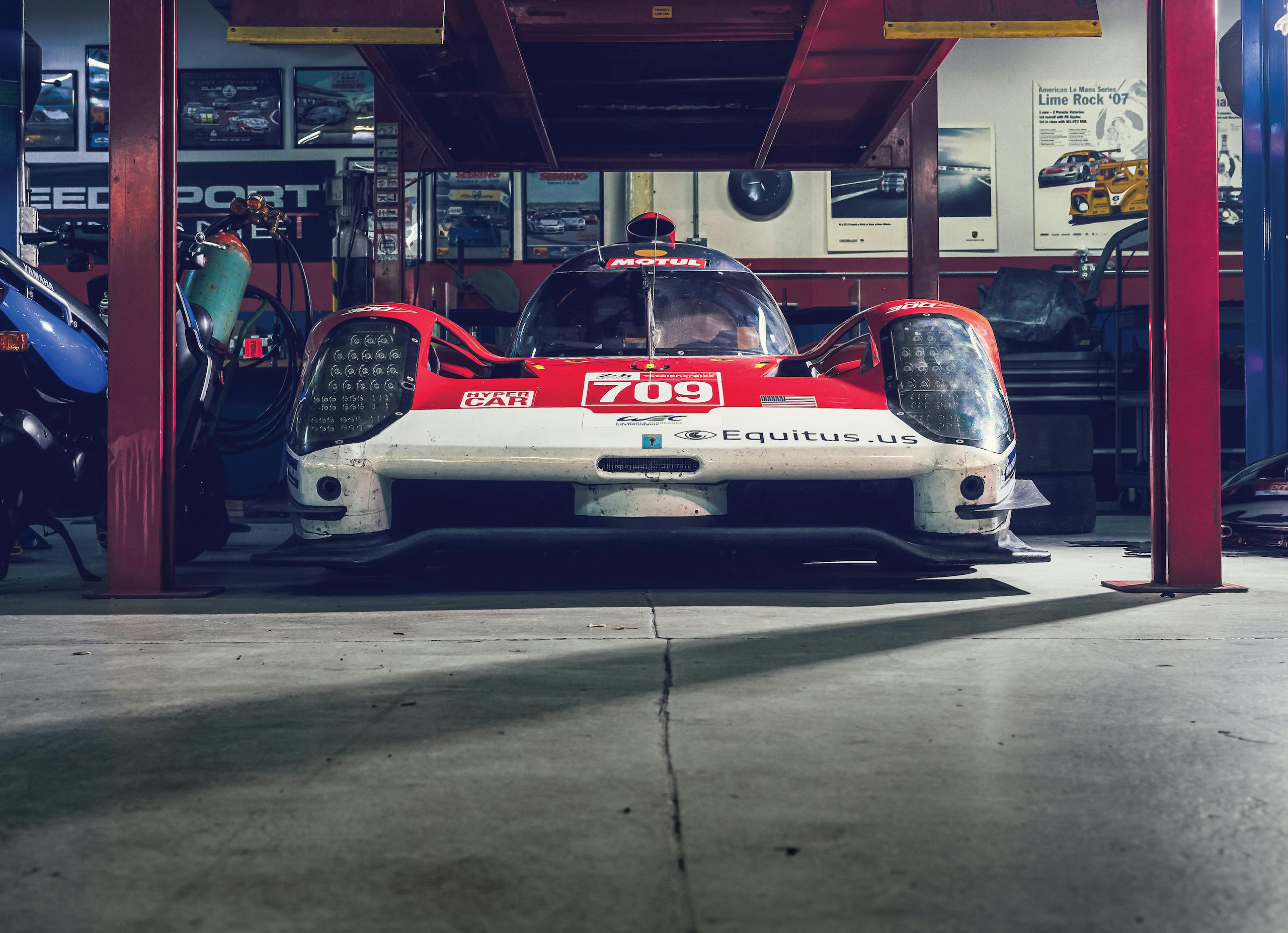James Glickenhaus, scuderia and supercar visionary, gives life to his dream cars
The dream. For car people, it takes many shapes and forms, starting with: I want a really cool car. Then, maybe: I want to go racing—wait, I want to build my own race car! Oh, and I want it to be competitive, and, come to think of it, I want to start my own car company, plus actively share my passion with my family and the world. And I don’t want to end up in the poor house.
Most of us, if we’re lucky, just settle for having the cool car in this motorized dreamscape. Then there’s James Glickenhaus, founder of Scuderia Cameron Glickenhaus. He appears to be well on his way to running the table and attaining gearhead nirvana by achieving all of the above. Glickenhaus has gone into the very expensive business of producing a fully street-legal exotic sports car. If that isn’t enough, he has designed and is building a mass-production off-road racer that can be used for daily commuting. And fielding a team to run at Le Mans and other international events. This guy is in danger of making starting a fully fledged car company look easy.
But it isn’t easy or cheap, says Glickenhaus, who named his company after himself and the surname of his wife of 40 years, Meg Cameron Glickenhaus, who is currently campaigning for a seat in the New York State Assembly. “To start a small car company is $100 million to start,” he says. “And if you make a car nobody wants to buy, then you might as well sink that money in the East River.”
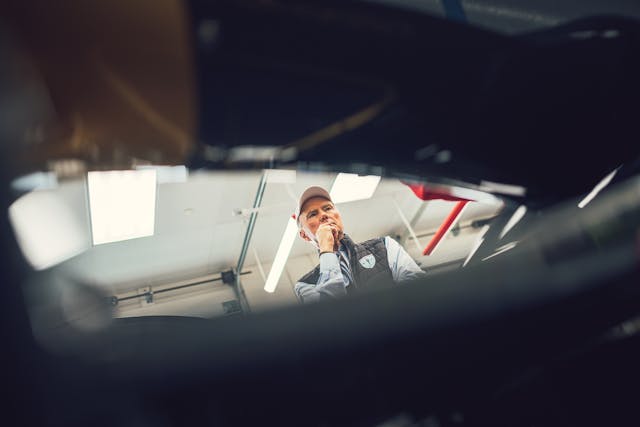
The heir to his father’s Wall Street fortune and a successful trader and philanthropist in his own right, as well as a former action-film producer, Glickenhaus cut his automotive teeth hanging around legendary Ferrari importer Luigi Chinetti’s Connecticut shop as a teenager. As an adult, his initial collecting obsession was taking exotic race cars and turning them into road-legal street cars. His first exercise, circa 1972, involved knocking a Donohue/Penske 1966 Lola T-70 SL 71-32 Can-Am car into something to tear up the rural byways of New York State. Others followed, including a 1967 Ford Mk IV that finished fourth that year at Le Mans and, post-Glickenhaus, sported air conditioning and electric windows. He also built a 1967 Ferrari 412 P prototype racer that was more comfort-minded than original. This is the sort of thing car-crazy people can do if they’re single-minded enough and sufficiently capitalized, though few ever do.
But that wasn’t enough for Glickenhaus, who will never be accused of being a member of the idle rich. In 2005, he was approached by Andrea Pininfarina—then chairman of the famous Italian design house—who asked him, “If you could build any car, what would it be?” Glickenhaus then hatched the idea that eventually took him from the ranks of racing car collectors to the even more rarefied group of supercar manufacturers. The result was the stunning Ferrari P4/5, which was based on a new Ferrari Enzo but paid unashamed homage to the beautiful Ferrari P3/4 prototype racers of the 1960s. Confronted with its jaw-dropping curb appeal, Ferrari grudgingly endorsed the effort.
Marketplace
Buy and sell classics with confidence
In retrospect, it was a $4 million bargain. Saudi Arabia’s now-notorious Prince Mohammed bin Salman once offered $40 million for it. “He walked into a tent at an F1 race, saw it, and said, ‘I am going to buy this car today.’ And I said, ‘Hi, I’m Jim. This is my car, but you’re not going to buy it today and take it home because I’m not going to sell it.’ And he says, ‘Oh, everything is for sale.’ And I said, ‘No, no, no, you don’t understand—I made this, I care about it, I’m not going to sell it.’”
Despite a glowing international reception for the car amplified by a burgeoning social media following, when Glickenhaus decided it was time to build a racing version of the P4/5, based on the then-current Ferrari 430, Ferrari wouldn’t get on board, refusing even to supply engine parts or technical backup. The obvious answer to this dilemma? Start his own car company.
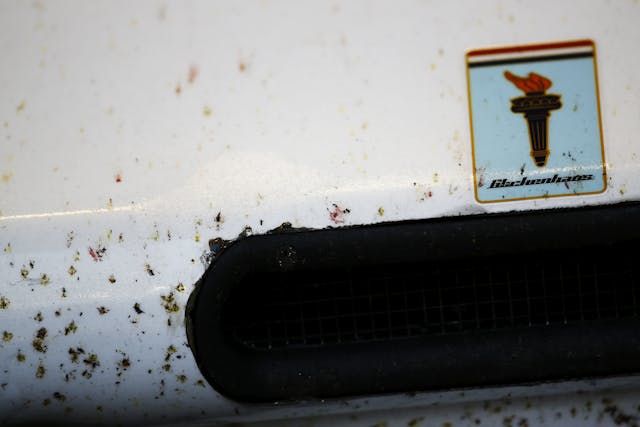
“We raced two years at the Nürburgring … we became SCG because Ferrari said, ‘You’re racing with our badges and you’re trading on our name and we want some money.’ And I said, ‘OK, great.’” Glickenhaus then hung up, took a screwdriver, and pried off all the Ferrari emblems from his new car. On YouTube. Then he hand-drew the Statue of Liberty torch, put the badge on, and started Scuderia Cameron Glickenhaus. This was in 2011. “Millions watched it, and that was it,” he says.
SCG 002, as the newly badged car was known, was outfitted with a hybrid drivetrain and went on to win the FIA World Championship Cup in Alternative Energies, “which was pretty cool,” Glickenhaus affirms. In qualifying, the Ferrari-adjacent 002, using a kinetic energy recovery system, made it around the ’Ring faster than any of Modena’s own machines had up to that point.
In 2017, SCG unveiled its 003 at the Geneva motor show, its first car built for paying customers. True to the Glickenhaus ethos, it was designed for the pilot who wanted to drive to and from the track with only minor modifications required before and after hitting the circuit in anger. Enter Jim’s son, Jesse, who first floated the idea of building pure roadgoing versions.
“I said, ‘Jess, you’re going to wind up with a lot less [inheritance] money if we do that,’” Jim recalls. That didn’t deter his son. And it became increasingly apparent over the course of a morning at SCG’s new factory in Danbury, Connecticut, that Jesse Glickenhaus plays a sizable role in driving the company’s ever-expanding vision. After studying biology and education, he received a master’s in energy and climate at NYU (where he’s also served as teaching faculty), attended law school (though he didn’t sit for the bar), and worked at the United Nations focused on climate security issues. Not exactly the academic pedigree of most who dwell in the world of mega-horsepower, to be sure. But he had the family bug and has done much of the heavy lifting when it comes to realizing the Glickenhaus vision. “I’m too old” to do all that’s necessary to enter serial production, his father cracked.
“Jesse has done all the regulatory things. I think he is one of the only people in the world who ever read the entire National Traffic and Motor Vehicle Safety Act backward and forward 700 times,” Jim says. “What people don’t realize is, yeah, you can build a one-off, but to make it a crash- and EPA-compliant, 17-digit (VIN) road-legal vehicle that you can build as many as you want and sell—well, that’s a totally different animal. We’re manufacturers now.”
“We are manufacturers,” Jesse reaffirms. Thanks in no small part to a couple of regulatory breakthroughs he spearheaded.
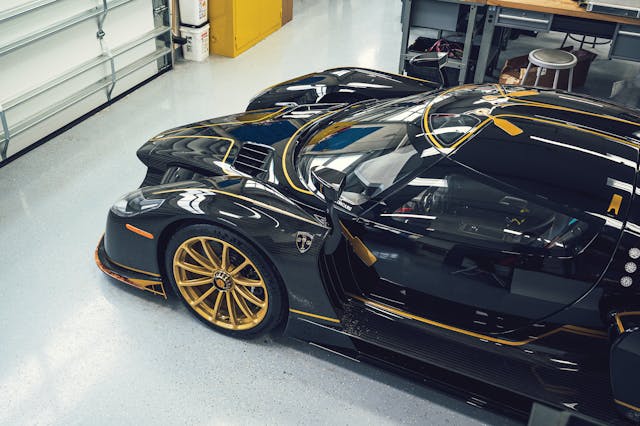
The ultra-low-volume SCG 003 was wildly expensive. The factory dealership, HK Motors, across the road from SCG’s Danbury facility, earlier this year was offering the last street car in the series for a heady $2.5 million. The march to something more closely resembling the mainstream—300 cars per year, SCG reckons—will be led by these two models: the SCG 004, with a starting price of $460,000, and the SCG Boot, a Baja racer inspired by the legendary 1960s ex–Steve McQueen machine, called the Baja Boot, that Jim bought some years back. The new Boot has gone to market at a mere $258,750. The plan is to sell 150 of each model annually. With these two offerings, Jim says, “We are at least an order of magnitude more exclusive than anything at that price point.”
At first glance, the thinly disguised race car and the Baja brawler for the road couldn’t be further apart conceptually, but the thread tying them together is SCG’s dogged adherence to the 1950s ideal of vehicles that might be driven to and from the competition. “That’s the crux of our company. Our vision, our mission with SCG, is we take race cars and we turn them into daily drivers.”
Moving forward with its biggest step into the limelight yet, the SCG 004 will be the company’s “volume” supercar and, like the SCG 003 before it, will be available in three variants: competition (C), mixed-use (CS), or street (S). Unlike the 003, which used Honda’s twin-turbocharged HR35TT built for IMSA’s Daytona Prototype class, 004s will all be V-8s based on GM’s LT4 as seen in the C7 Corvette, fettled to higher performance by Autotecnica Motori, an independent race-engine constructor in Casalmaggiore, Italy. Only the competition-oriented SCG 004C will be naturally aspirated, because, says Jim, the horsepower limit in the GT3 class is about 530 and the engine already makes that without forced induction.
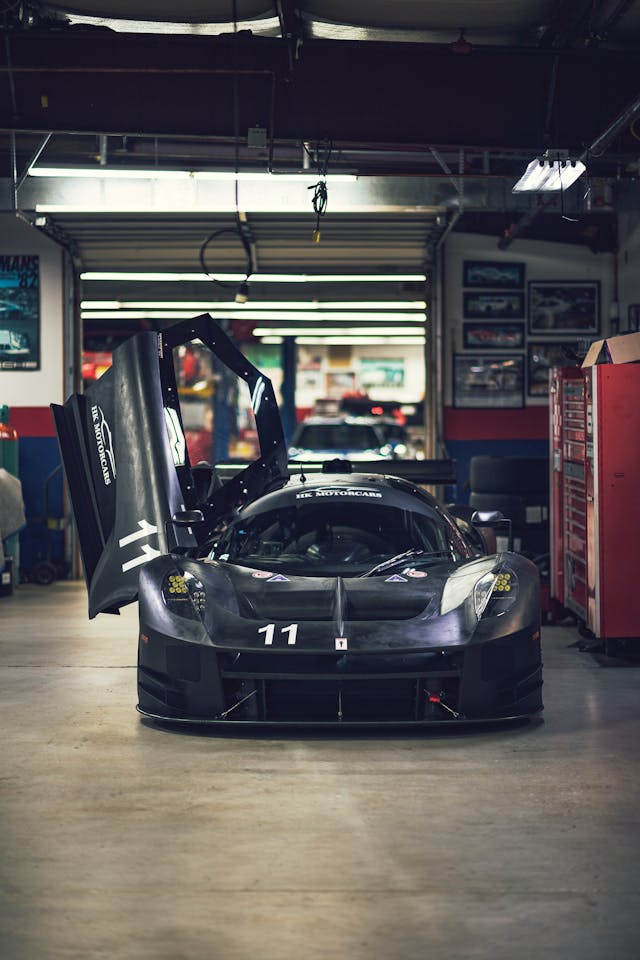
The new line will be considerably cheaper, too, though none will be hanging around, what with 650 horsepower supplied in the $460,000 street car. There’s a whopping 850 ponies for the $598,000 CS model, also adorned with a supercharger, and a comparatively humble 600 horsepower for the naturally aspirated competition model in endurance tune, priced beginning at $650,000. The V-8’s additional low-end torque will make for faster exits out of corners versus the SCG 003C’s peaky V-6, the company claims, while the excision of 220 pounds from the new model versus its predecessor won’t hurt, either. Although top speeds of 201 mph for the S model and 211 mph for the CS are claimed, Jim says, with not untypical candor, that such numbers are largely academic in real-world driving.
Interestingly, the SCG 004 is a center-driven three-seater. Center airbags are not required by law. And because its two outboard passenger seats are located behind the driver, they are adjudged as back seats—and hence, too, have no airbag requirement. As Jesse explains: “If you think of the big pickup truck, the center seat in a pickup truck does not have an airbag. And the reason it doesn’t is because General Motors and Ford and everybody want that architecture for giant infotainment [systems] and other things.”
Jesse read the rule and deemed it as requiring airbags only for the front driver and passenger outboard seats. “Now, what is an outboard seat? An outboard is very clearly defined; it’s not centered,” he says. “Now, you’ll say, ‘OK, well, what about the rear seats?’” The rule there, he explained, is if the back of the front seat is in a position so that the front of the rear seat is not overlapping by a certain amount, they are considered rear seats that don’t require airbags. “We went to NHTSA, made our case, and they said, ‘Make a submission.’ And then they wrote us a letter. It’s on our wall and you can read it.” The letter basically says: You were right. “That letter is a legal [finding]. They can never go back on it,” says Jesse.
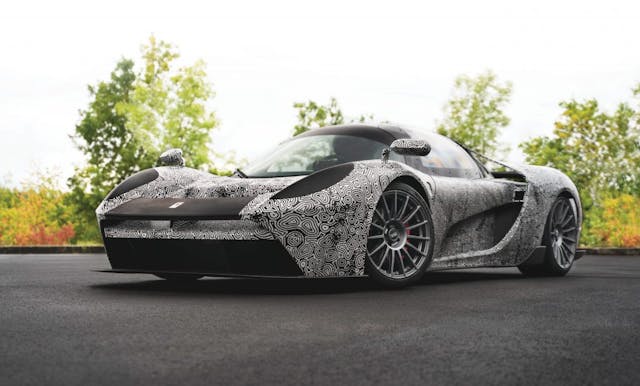
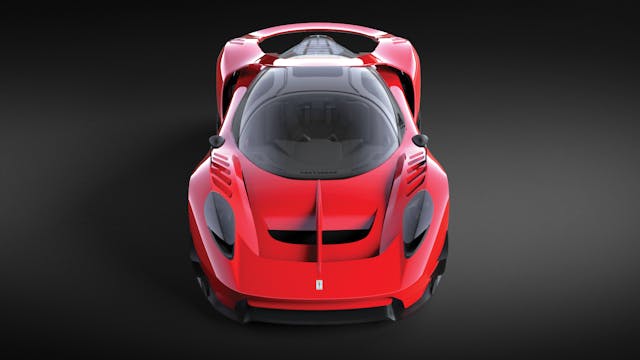
Navigating NHTSA was made easier by the fact that the well-connected family has its share of well-connected fans. Jesse notes that he’d received a crucial introduction from “a friend, Jonathan Weinstein, who was at the U.S. Chamber of Commerce and now is at GM.” Weinstein met the Glickenhauses at the New York auto show and, according to Jesse, told them: “Oh, I’ve been a fan of yours for a long time. What are you doing? You know, I’m at the Chamber of Commerce.” Weinstein helped get Jim an Award for Excellence in Innovation by the Chamber and introduced him to the person who would become the company’s new attorney, a former chief vehicle counsel at NHTSA. “She knows everything about NHTSA and the regs,” says Jesse.
“This [breakthrough] is one reason I stopped production,” Jim adds. Based on what their NHTSA connection was telling them, Jim decided to stretch the car 4 inches to accommodate relocating the outboard passenger seats rearward. He announced the change on the internet, eliciting something of a squall of protest from those who had placed deposits on the car and who thought the change would ruin the styling. “I said, ‘Just do it,’” recalls Jim. “So then we stretched it, modified it. And then I put out the picture and they said, ‘That’s the old car!’ I said, ‘No, it’s not. It’s a new one. It’s stretched 4 inches.’ You can’t tell.”

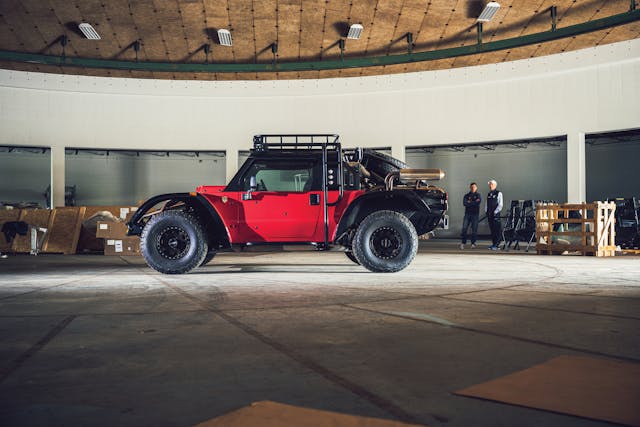
The SCG Boot has also taken advantage of the company’s skill at parsing regulatory fine print. Winner of the 2019 Baja’s Class 2, the two-door, two-seater SCG Boot racer is inspired by the purpose-built Hurst Baja Boot, which Steve McQueen ran in the Baja 1000 in 1969. The creation of moonlighting GM engineer and desert racing aficionado Vic Hickey, it debuted in 1967 when the race was still known as the Mexican 1000. It featured a Corvette rear with Oldsmobile Toronado axle shafts and a transfer case, plus four-wheel independent suspension grafted to a steel tube chassis. Amazingly smooth for its day, it lived on in legend, even if it was felled by a busted transmission during its run in the ’69 Baja 1000.
In 1969, the Boot did win the slightly less brutalizing Baja 500. Jim bought it at auction in 2010 and, true to form, readied it for road use. And when it was time for it to serve as the conceptual basis for the SCG Boot, the original was sent off to highly regarded off-road constructor Elliot Pollock’s Armada Engineering in Chatsworth, California, to provide literal and figurative inspiration for an otherwise clean-sheet design.
The original GM connection lives on in the new car with its LT4 V-8 crate motor, installed backward as in the original Boot, with the transmission in the center of the truck. The new Boot features a chrome-moly chassis, 37-inch BFGoodrich Mud-Terrain T/A KM3s on 17-inch wheels, twice the suspension travel of its inspiration, a four-door option for “road” cars with suicide doors to the rear, and a supercharger boosting its naturally aspirated 6.2-liter V-8 to 620 horsepower and 650 lb-ft of torque. Unexpected luxury items in the roadgoing SCG Boot include six-way power seats, air conditioning, Apple CarPlay with touchscreen, GPS, and a backup camera. The fuel- and oil-level gauges are exterior-mounted to expedite progress on the go, while McQueen’s Boot, it’s safe to say, didn’t have the SCG tribute’s cupholders or USB charging points, either. But SCG’s real party trick, says Jim, is “building something that can take 100-degree idling, air conditioning on, in bumper-to-bumper L.A. traffic, and not overheat—and yet can do the Baja.”
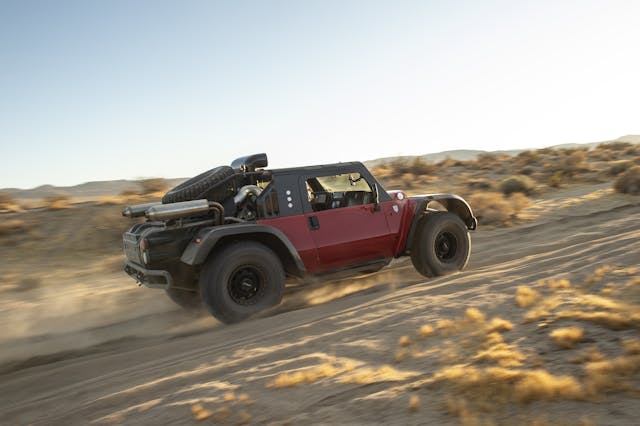
I had a chance to drive the new Boot briefly, and briefly, it is unlike anything I’ve ever piloted, more out-of-the-box fun than any SUV in existence. Jesse reminds us that it’s an MPV, not an SUV, and that multipurpose status is key to its NHTSA approval. Whatever it is, its vast suspension travel allows it to pass over high berms and big boulders at speed while imparting a feeling not unlike floating on a firm waterbed. A high-powered one.
Early competition success—winning SCORE’s Class 2 at Baja in 2019 and 2020 and both times defeating the much better-funded and copiously staffed Ford Bronco effort—suggests that the concept is on sound footing. The 2021 race, attempted in SCORE’s unlimited Class 1, was adjudged a success because the Boot finished, albeit in seventh place. Said Jim after the race: “In 2021, the Bronco did not come back, so we decided to move up to Class 1 for pure race buggies. Our Boot was much heavier, with a lot less horsepower than the rest of Class 1, and we knew we had little chance of winning. But we race to test our vehicles and push them as hard as possible to learn how to make our road vehicles as good as possible.” The 2021 Baja 1000 was point to point, not a loop as in past years, so it was longer and much more brutal. Even so, the Boot ran 10 mph faster on average. It broke and got fixed, costing the team seven hours of lost time, but it still finished seventh in a class where more than 30 percent of the field DNF’d. “We learned a lot,” says Jim, “which we’ll put into our road Boots and next year’s Hydrogen Fuel Cell Zero Emission Boot attempt to be the first zero-emission vehicle to finish a Baja 1000.”
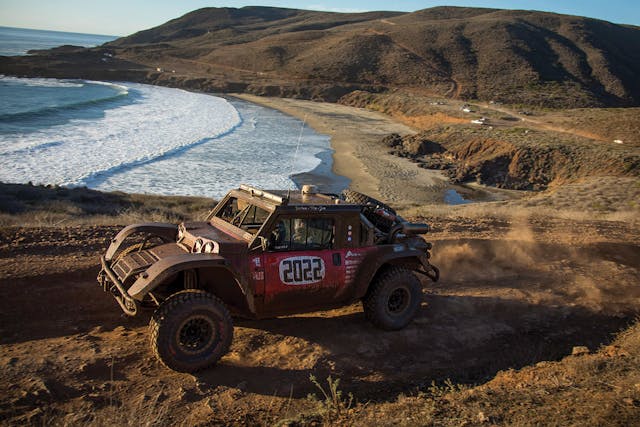
Performance statistics, racing results, and legal strategies aside, in SCG’s new Connecticut factory, the hard points of the Glickenhaus dream are laid out before your eyes as stacks of carbon-fiber tubs, brake rotors, wheels, tires, suspension, and other components sit arrayed in neat piles. The overall feeling of excitement and deliberate forethought is not unlike that which accompanies someone very particular moving into a new house. Many of the items have come from Italy—as well as significant engineering in 004’s case—with over 35,000 hours of development testing done by an Italian consultancy, Podium Advanced Technologies. Jim expects additional American suppliers coming on board in the near future, but he isn’t fussed either way.
“We are a little bit of what Ferrari used to be,” he says. “When Ferrari started in Modena, it was really like that—meaning Ferrari was a company, but there were a lot of really talented people in Modena who had little shops, like Touring, Pininfarina, Scaglietti, Drogo, Brandoli, and various chassis makers—guys that did different things. And they would go down the street and they would say, ‘Look, here’s what we need; we don’t have to have an engine-casting department here.’ So we do the same thing. We use people all over—and really top people.”
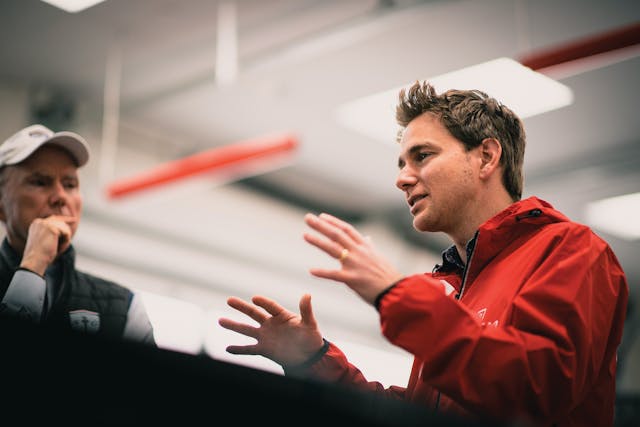
Central to SCG’s new reach is the fact that the relationship between Jim and Jesse is not the typically troubled one of other father-son combos—Henry and Edsel Ford, for example. With the Glickenhauses, Jim gives Jesse a lot of credit; together, the two of them bristle with shared ideas. “Having Jesse involved has made it possible,” says Jim. “Without him, I wouldn’t have gone the distance. I wouldn’t have figured out the airbags. I wouldn’t have figured out the production.”
Jesse has also been instrumental in building out the SCG social media following. “All organic,” he says. “It’s my dad and myself, and we love sharing the stories and interacting with people. We’ve spoken with the heads of some of the biggest car companies in the world, the people who run the social media. And they’ve said, ‘We love you guys. We actually follow your account. You say all the things that we’re thinking, that we’re not allowed to say. You just keep being honest and calling out bullshit when there’s bullshit and just being real.’” Jim cites their willingness to acknowledge their failures and disappointments for all the world to see, all in the name of showing how they will learn from their experience and do better next time.

With the infusion of new blood and additional capital—an IPO is meant to raise $30 million from a sale of 10 percent of the company—SCG’s upcoming plans are ambitious, indeed. An SCG 008, a.k.a. the Mini Boot, is an off-roader with the body of a hypercar meant to be assembled by owners from a kit. Shorter and, at 3500 pounds, lighter than the big Boot, it is still meant to be Baja-ready. Another idea: a customer racing program with Le Mans entry included in a $6 million package that comes with your own example of the SCG 007 hypercar, which placed fourth and fifth at Le Mans last year. Further down the road: hydrogen fuel-cell Boots and pickups, a factory rebuild program for current models, and constant updates to its previous production. Said Jesse: “My goal is that no one ever sells one of our cars, because they don’t want to. It’s too much fun. And instead of it being obsolete in three years, it’s a brand-new car in three years, because here’s an EVO kit.”
“It takes perseverance and luck,” Jim responds when asked how they did it. “The other thing that people don’t understand is how much money it takes. Everything we’ve done, the Le Mans program, the cars—I’ve spent $100 million, OK? And you say, ‘$100 million, well that means you had to have made $200 million to get to $100 million,’ and then you still have to have enough money to buy a burger, and turn on your heat in the winter.”
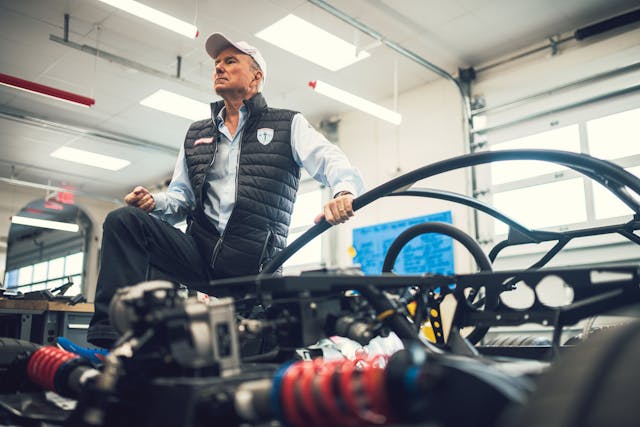
“Now,” Jim continues, “is anything guaranteed? Absolutely not. Could there be an end of the run, and at some point, I say, ‘Look, I can’t keep spending like this, and that’s it?’ For sure. However, the math is this: If we eventually get to 300 vehicles a year, SCG will net $40 million to $45 million a year.”
“That’s low,” says Jesse.
“I’m giving you very conservative numbers,” is his father’s rejoinder, adding that if SCG can make a full-size hydrogen Boot pickup truck that is zero emissions, goes 800 miles between fill-ups, refuels in 60 seconds, and costs $100,000, “This thing will be a multibillion-dollar company.”
That’s a big if. Meanwhile, Glickenhaus, both senior and junior, have their minds on more immediate concerns. And they already have a few moments to savor. “I have stood at Le Mans and watched two cars finish that had my name on them and finished respectably against Toyota,” says Jim. “I’m very proud of that thing, and I’m really happy to have a road car with a manual gearbox and 650 horsepower. I built my dream cars.”

Check out the Hagerty Media homepage so you don’t miss a single story, or better yet, bookmark us.









